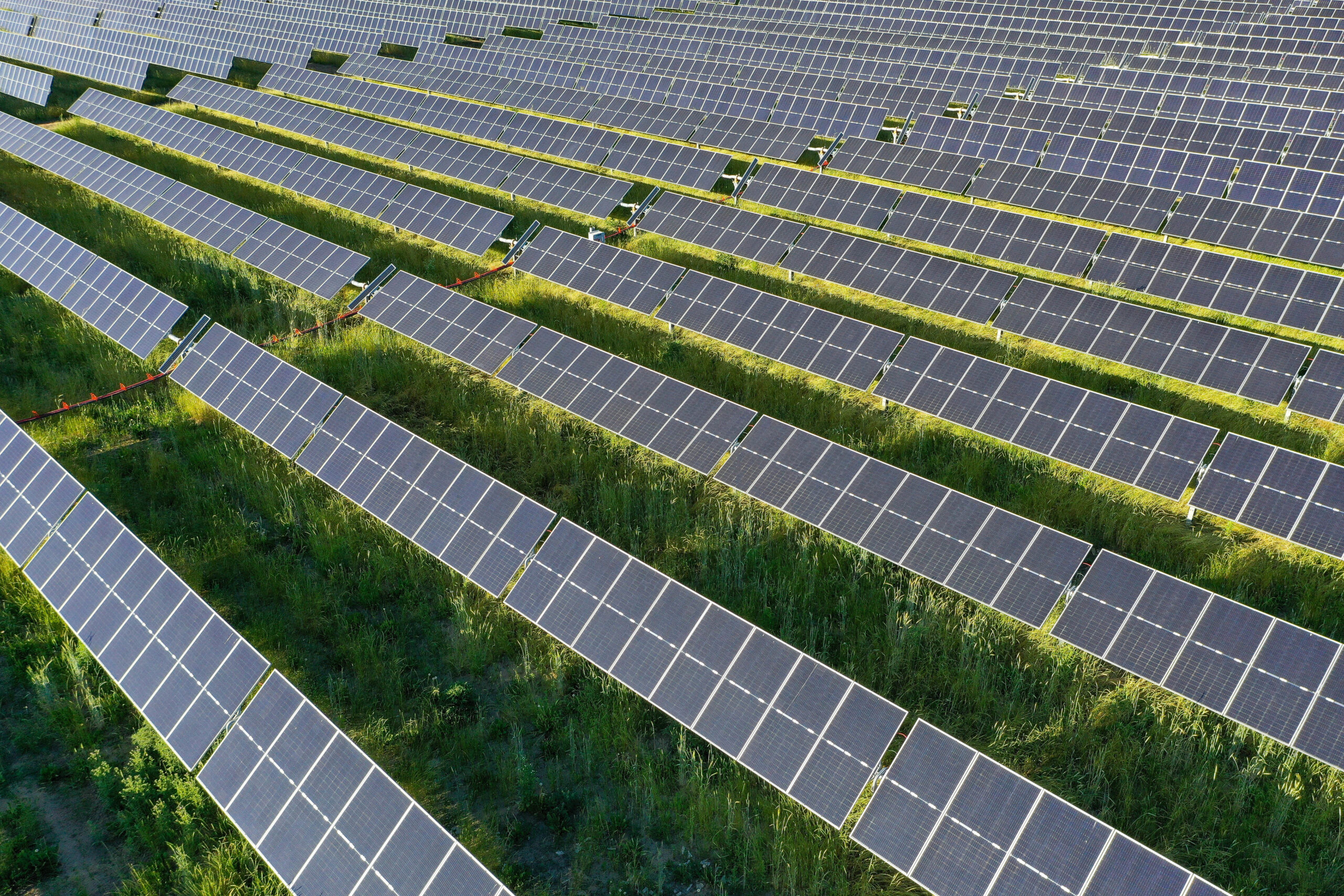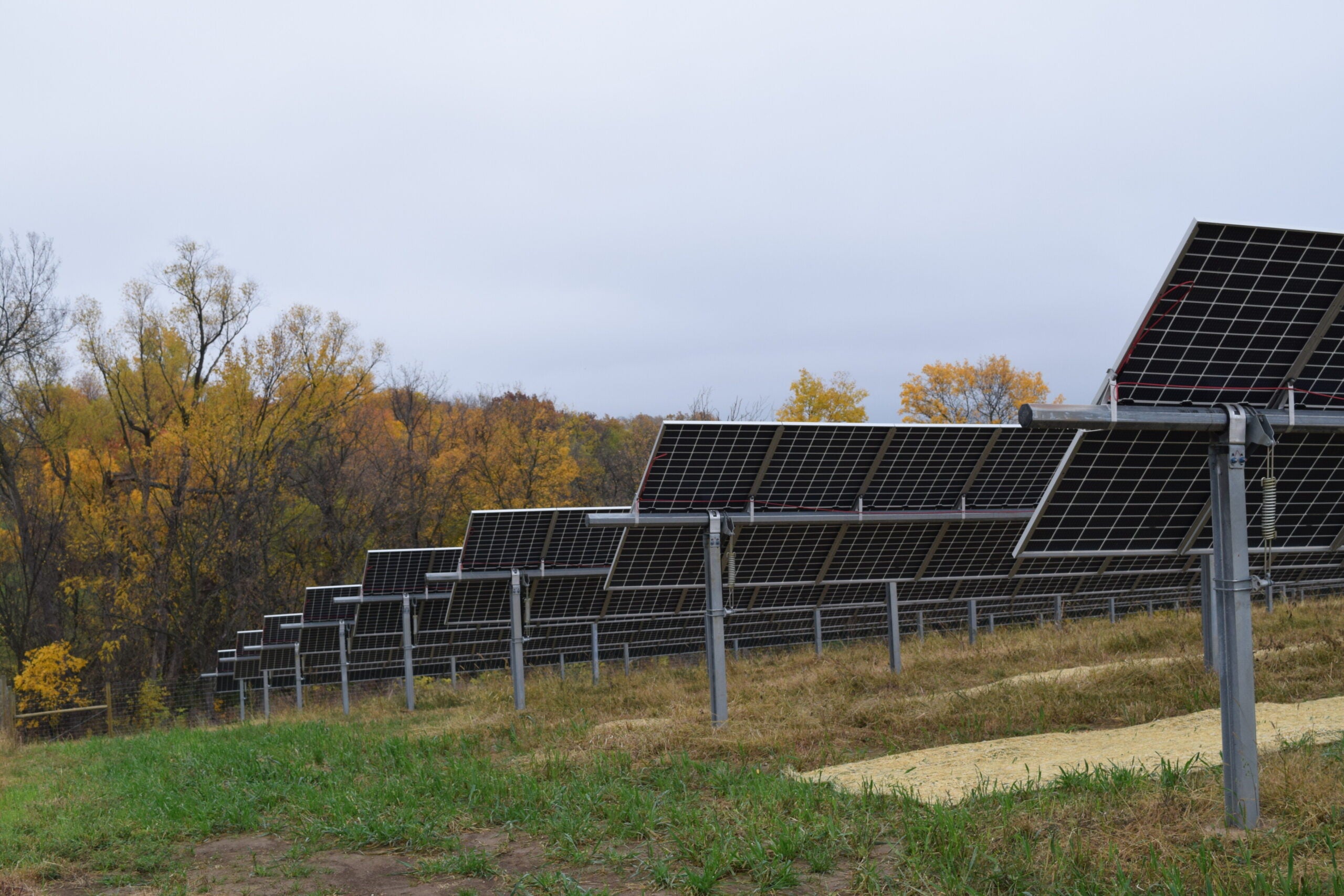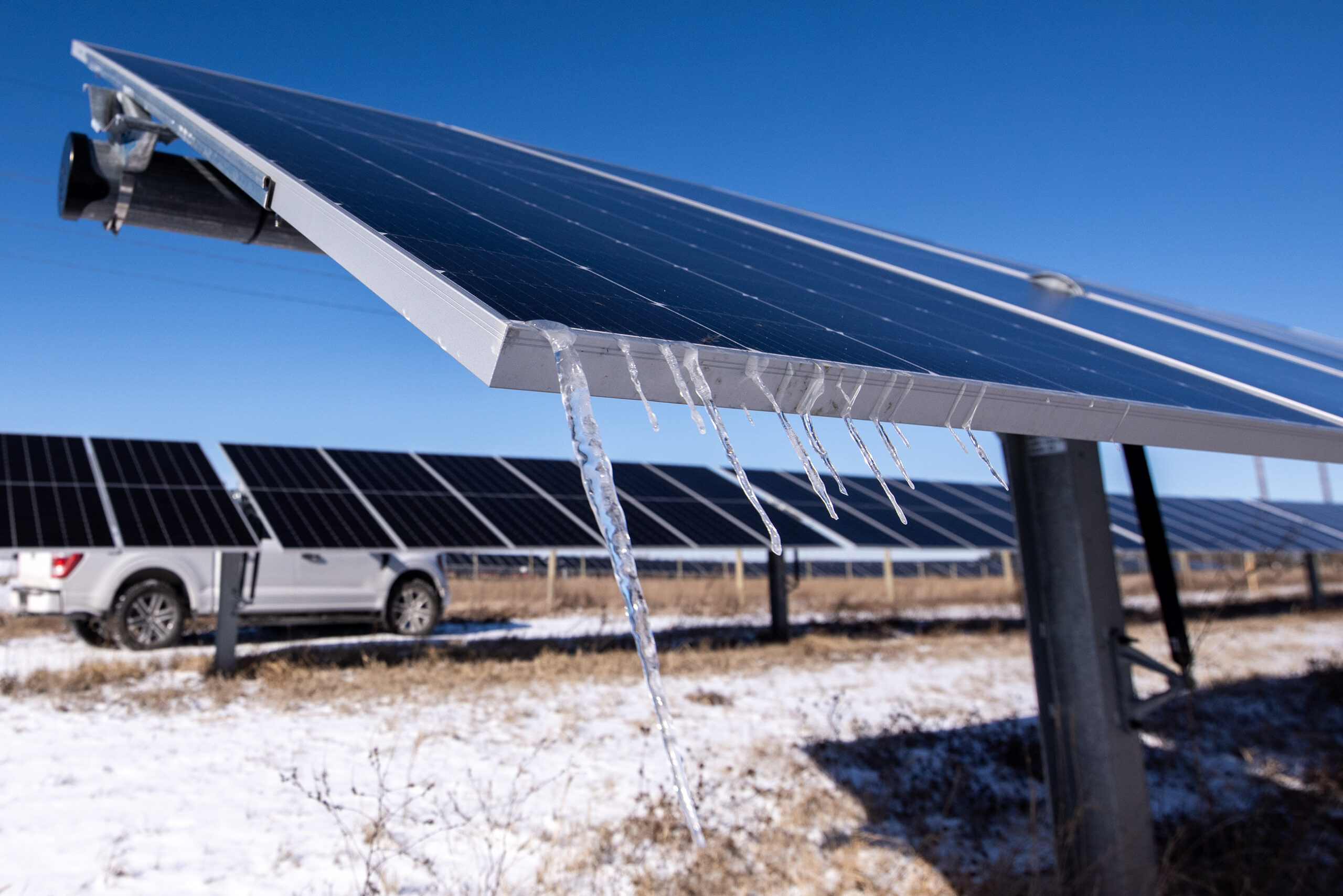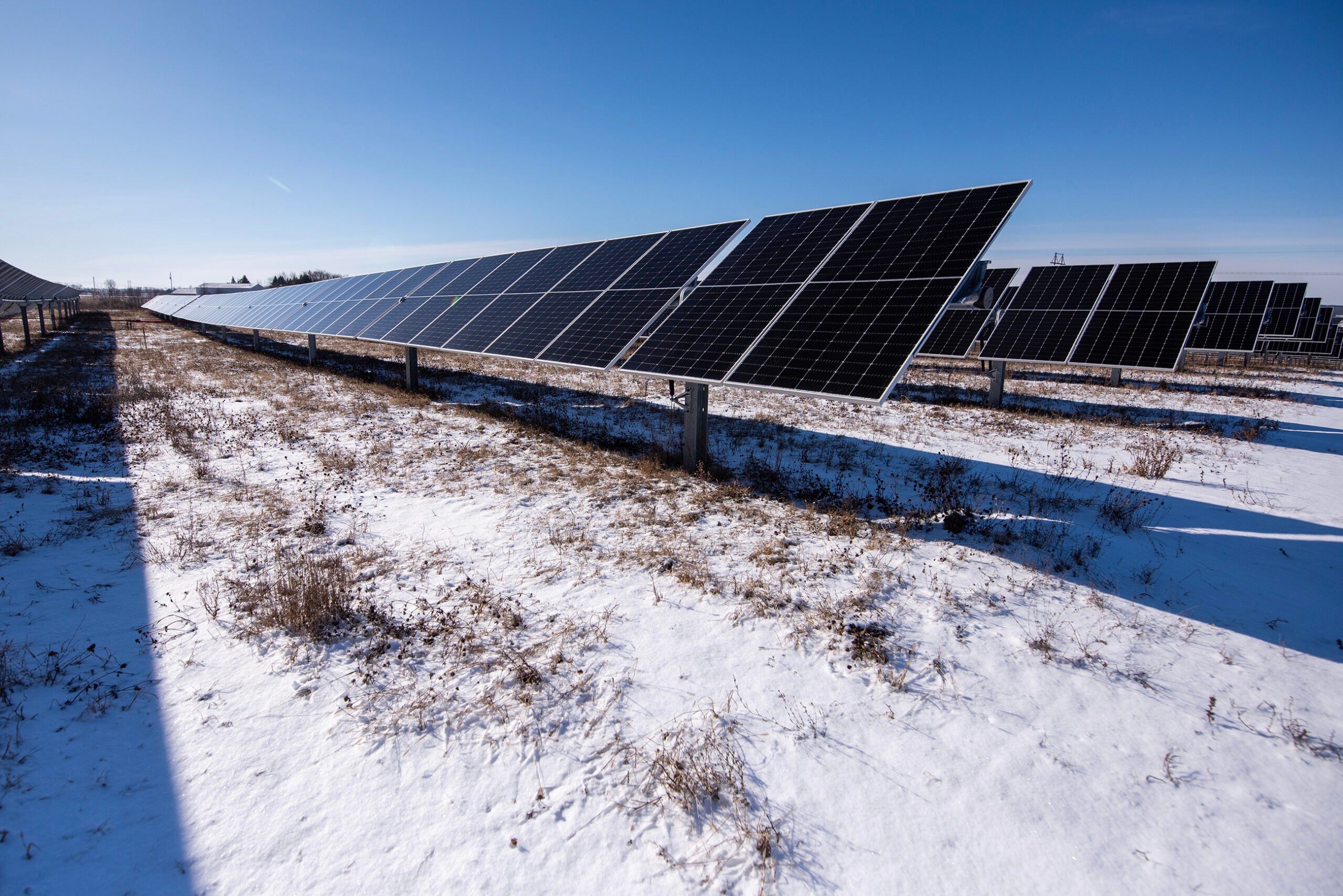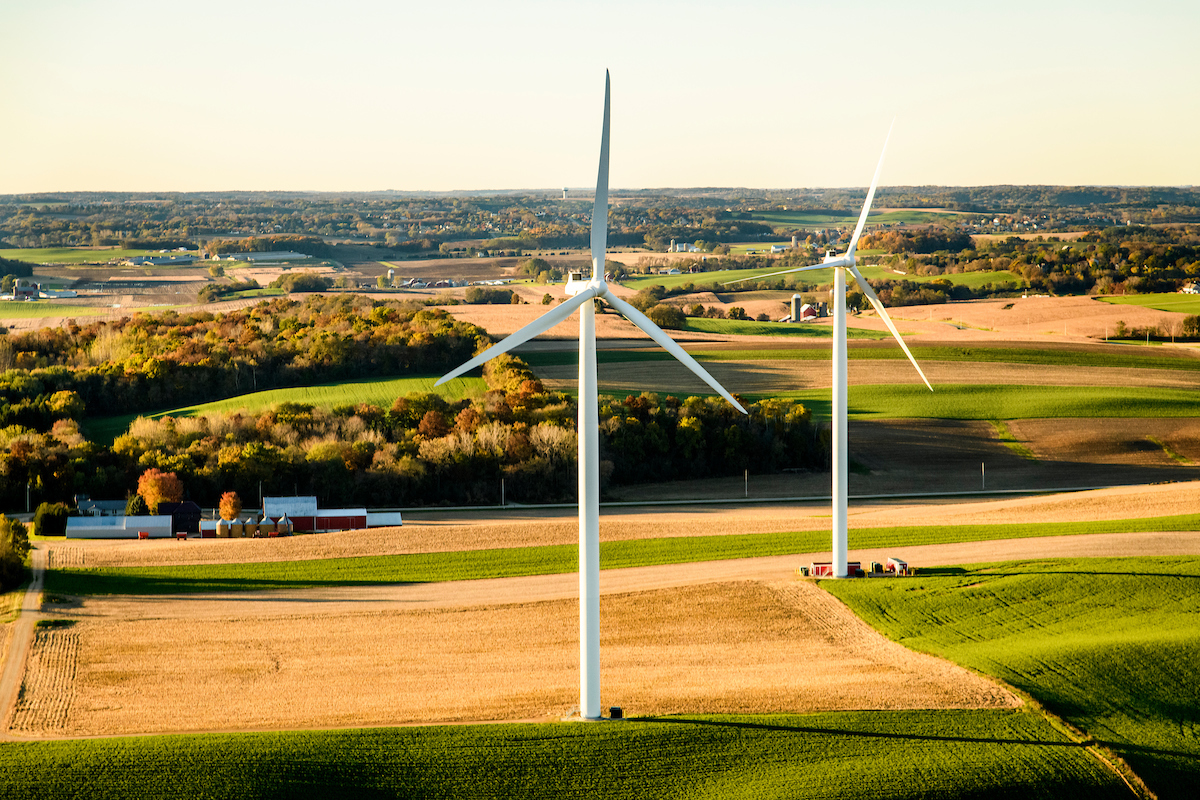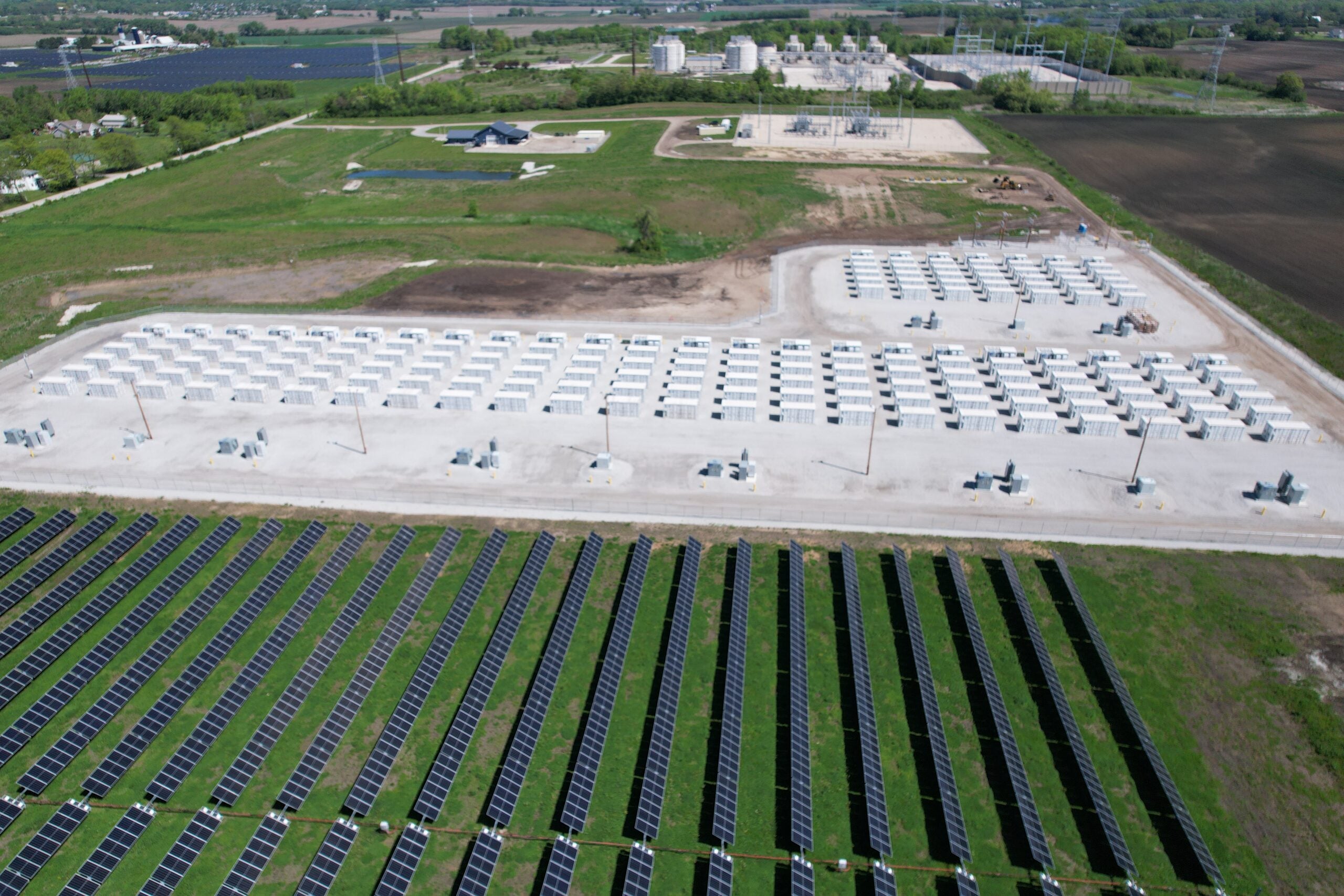The clean energy transition in Wisconsin is taking another step forward with three utility-scale solar projects expected to come online in 2024 and more coming in the next several years.
Two of the solar farms are joint ventures between WEC Energy Group utilities and Madison Gas & Electric. The third is an Alliant Energy project.
According to the Public Service Commission of Wisconsin, those projects will combine to generate 650 megawatts of electricity, roughly enough to power an estimated 123,500 average Wisconsin homes.
News with a little more humanity
WPR’s “Wisconsin Today” newsletter keeps you connected to the state you love without feeling overwhelmed. No paywall. No agenda. No corporate filter.
Developers have submitted applications to the regulator for approval to build another three utility-scale solar projects totaling 1,720 megawatts, about enough to power an estimated 326,800 average homes. Those projects are not currently attached to any specific utilities.
Sam Dunaiski, executive director of RENEW Wisconsin, said his organization also expects two large wind projects will come before the PSC later this year.
“We’re talking about an incredible amount of renewable energy capacity that is going to be incorporated into Wisconsin’s electric mix here in the upcoming years,” he said.
Darien, Paris solar project nearing completion
Both the Darien Solar Energy Center in Rock and Walworth counties and the Paris Solar Park in Kenosha County are expected to come online this year, according to WEC Energy Group spokesperson Brendan Conway.
Conway said panels will begin being installed at the Paris site this month, while the Darien panels are expected to arrive this summer.
“At both those sites, we have been continuing to do grading, construction (and) putting steel in the ground, so then as the solar panels arrive, it just becomes putting them up, interconnecting them and getting them going,” he said.
The Paris project was initially slated to come online in May 2023, but construction was pushed back because of delays in delivery of solar panels.
Both projects, he said, have the same ownership split, where We Energies owns 75 percent, Wisconsin Public Service owns 15 percent and Madison Gas & Electric owns 10 percent.
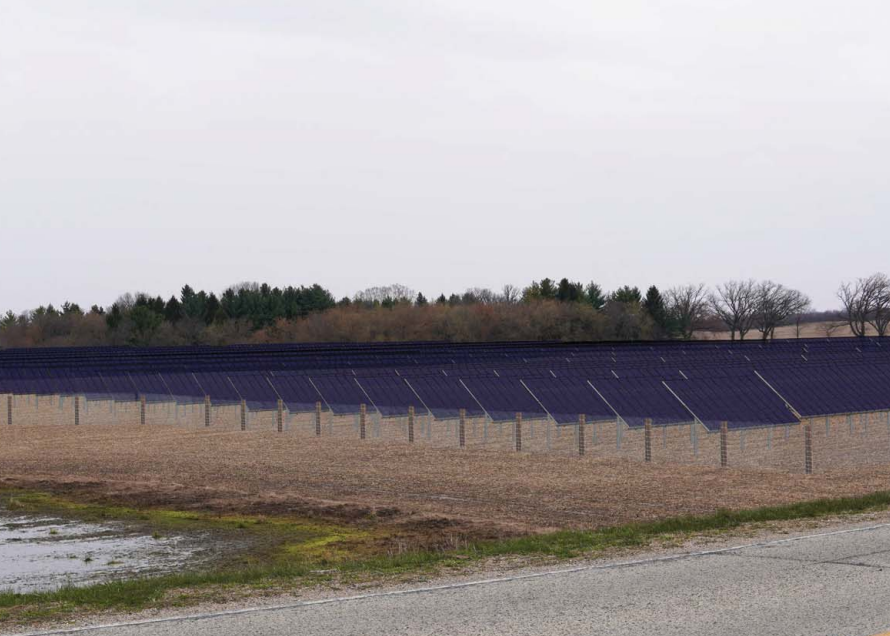
In addition to Paris and Darien, Conway said WEC Energy Group is working on additional solar projects. They include the Koshkonong Solar Energy Center in Dane County and the High Noon Solar Energy Center in Columbia County.
Those are also partnerships with Madison Gas & Electric. Koshkonong is expected to go into service next year, and High Noon in 2026.
Darien, Paris, Koshkonong and High Noon will each feature a battery storage component in addition to solar. And Conway said the utility has clean energy plans that extend beyond just those projects.
“We are planning to invest $7 billion in the coming years in more clean, renewable energy,” Conway said. “Once it’s all said and done, we plan to build and own 3,800 megawatts, which is more than quadruple our current carbon-free generation.”
Grant County Solar Project in final phases
Alliant Energy’s Grant County Solar Project is also on track to come online in the coming months. It’s the last of the utility’s 12 large-scale solar projects in Wisconsin.
Panels have been installed at the Grant County site, and the project is in the “final testing phase,” said Alliant spokesperson Tony Palese.
He said the utility doesn’t currently have plans for additional large-scale solar farms in Wisconsin, but it is working on several smaller projects. Those include breaking ground on a community solar project in Janesville and partnering with the University of Wisconsin-Madison on an agrivoltaics project that combines solar energy with agriculture.
Palese said the 12 utility-scale solar projects have been a “monumental undertaking” that will provide enough electricity to power almost 300,000 homes annually.
“Over the course of the construction of all 12 sites, we’ve estimated that there have been over 2,500 jobs created as part of that construction process,” he said. “Long term, these sites are going to be delivering benefits to the communities for decades to come in the forms of shared revenue payments, and some of the ongoing environmental benefits as well.”
Dunaiski with RENEW Wisconsin said utility projects are important because they help to decarbonize the state’s electricity sources at a much larger scale. But he said the state needs a mix of renewable energy options to help meet its carbon reduction goals.
“These large solar projects are, in RENEW’s mind, just one piece of our decarbonization puzzle,” he said. “Large solar farms, small rooftop solar installations, wind installations, existing hydro capacity (and) all of these different resources scattered around the state are a big part of how we’re going to do those things like decommission coal plants, and eventually move away from all of fossil fuels.”
